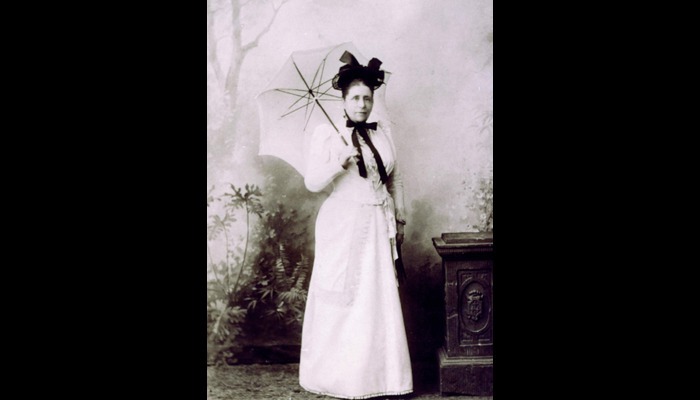
Celebrating Elder Park Library

Elder Park Library was gifted to Govan by Mrs Isabella Elder, who donated £10,000 to meet the cost of the building in the early 1900s. The library has served the people and visitors of the city since the building was opened in 1903.
In 2024, a refurbished library was opened after a £4 million restoration. In this post, we share the stories of the library staff and customers who are part of the story of the library.
Isabella Elder

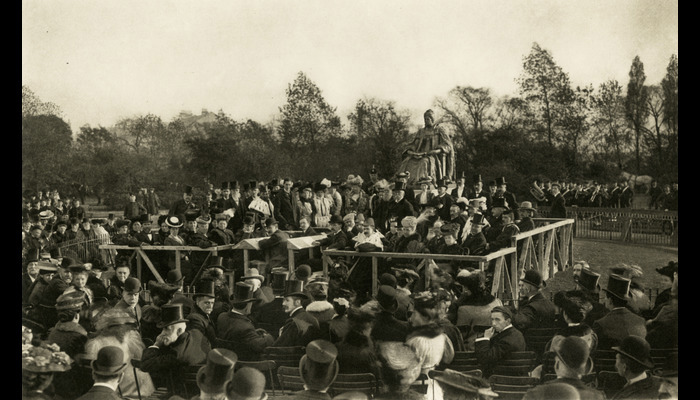
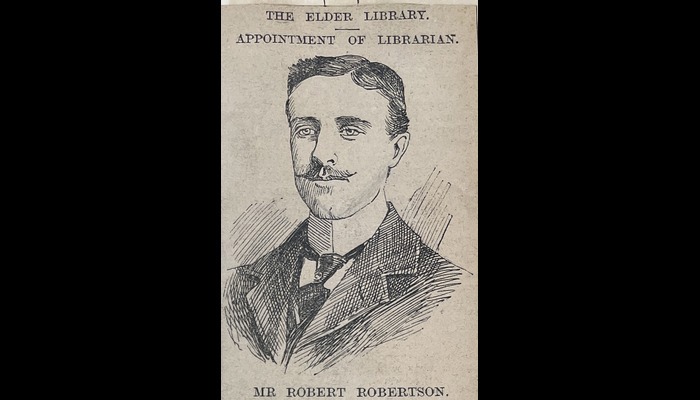
Isabella Elder was a philanthropist who had a deep interest in the welfare of the people of Govan, and the education of women. As well as the library, she also founded a School of Domestic Economy, Cottage Hospital and Cottage Nurses Training Home. She purchased North Park House in the West End of Glasgow to house Queen Margaret University, the first higher education college for women in Scotland. Her husband John’s business was one of the world’s leading shipbuilders.
Andrew Carnegie was present at the opening, and shared inspiring words to the group who gathered there:
"I should like to say to the workers of Govan that Mrs Elder had you chiefly in mind when she donated funds for this monument with a soul in it. Here is an institution which knows neither rank nor wealth within its walls, which stops the ignorant peer or the ignorant monarch at its threshold, and declines to unveil to him its treasures, or to waste time upon him, and yet welcomes the workman according to his knowledge or thirst for knowledge.”
The library had three departments: reference, newsroom and young people’s room, but no lending library. In 1906, as the library flourished, the number of books consulted was 33,863, with the young people reading 57,448 volumes in that year alone. The first librarian was Robert Robertson, who was only 24 years old. Like all librarians in Glasgow, he had started his career in the Mitchell Library, at the age of 15.
In 1912, the library was incorporated into the city’s library service, alongside Couper Institute. Isabella Elder gave a further £27,000 to the city for furnishings, books and maintenance, with the agreement that the city was “prohibited from selling or disposing of the building”.
In the first half of the 1920s, as the Govan ratepayers clamoured for new public halls, a lending library and washhouses promised during the annexation of Govan in 1912, the library began to lend books for home reading, and an extension was opened.
At the reopening ceremony in 1929, Lord Provost Montgomery announced that:
“He opened no building- with greater pleasure than a public library because he believed that the provision of good literature such as could be obtained in the Corporation libraries was one of the best means towards the betterment of the social life of the city.”
Glasgow Evening News, 2nd June 1925

On 12 April, 1929, the Govan Press columnist “D. Profundis” described a library right at the heart of the community:
“In the clamour and hustle of modern street' life the public library is an oasis of calm. To many it is a home from home. Some use it to keep contact with the culture of the age and the eternal things of life. Others, whose literary taste is dulled by sensational news stories and films, go there to seek the most pepper-and-salty novels they can find. Not a few regard the library as a place wherein to scan periodicals while sheltering from inclement weather. Of Glasgow libraries west of Paisley Road Toll and this side of the river, the Elder is the paragon. Standing in its own ground, and of truly classic appearance, it is the pride of the locality, and an indispensable factor in the lives of many Govan folk. Visits to it help to break the deadly monotony of the unemployed man's day. The newspaper room has always a quota of aimless leaf turners, among whom, there is great demand for the big illustrated society weeklies."
"Racing information is deleted from the newspapers, but there are punters to whom the black-ink is no obstacle to finding the winner of the two-thirty. These, by dint of much peering and dead reckoning, literally read between the lines and learn the fate of their speculated tanners, incidentally, sorely trying the patience of whoever is waiting to read the paper next. In the forenoon papers advertising situations vacant are besieged by job seekers, who crane and peep under elbows and over shoulders for news of work."
"The lending department, with its fine open shelf system, is a borrower’s paradise. Everybody here moves with quiet tread and speaks in hushed tones, as if awed by the galaxy of shelved erudition. The regular borrower is recognised by the proprietary air with which he handles the volumes. Fiction seekers predominate. Most of these select books with titles that promise excitement, and the works of modern popular authors are so greatly in demand that there is a need for duplicate copies of them. The economics and politics shelves are well patronised by those Govanites who are convinced that there is something rotten in the State."
"The reference room is a students' stronghold. Here the aspirants to the learned professions grapple with abstruse studies. Nobody will ever know what desperate swotting orgies are enacted here. Ever and anon a student wearily lifts his eyes from some brain-freezing text-book-and pensively gazes out at the park as if reflecting that the path of learning is indeed a rough and rocky one.”
Elder Park Library in the '60s
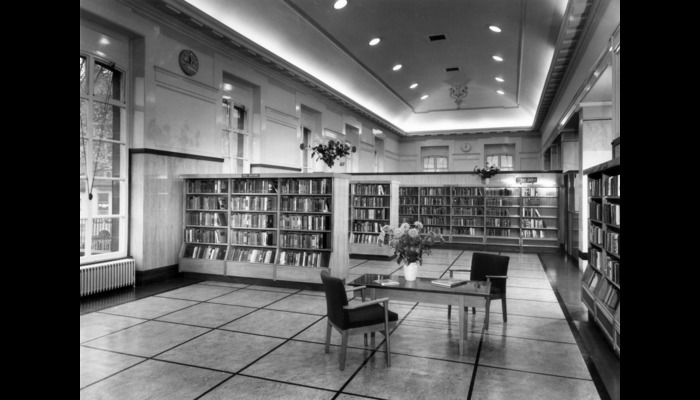
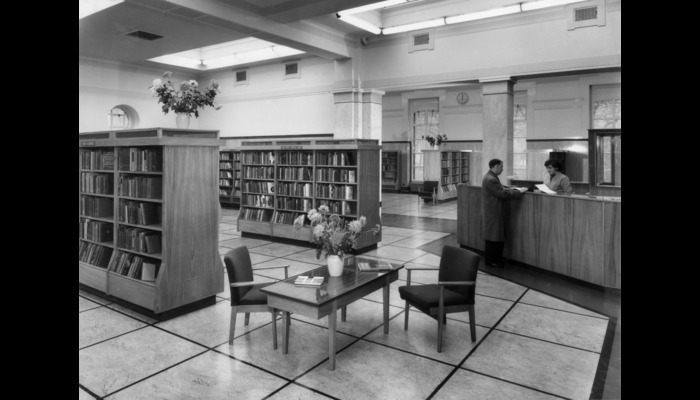
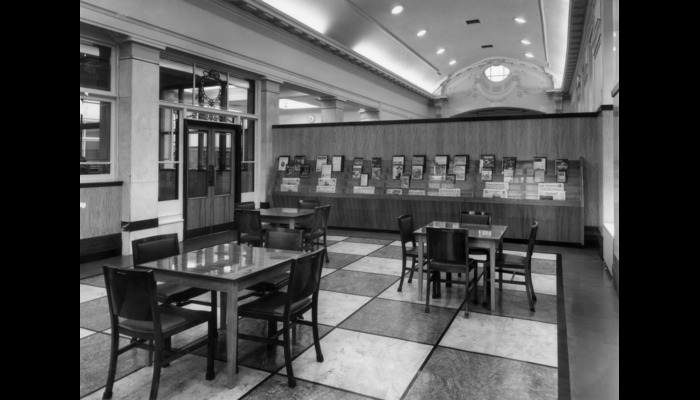
Refurbishments in 1962 cost £15,000, and included the renewal of walls, floors, ceilings, bookcases, heating, lighting and furniture. According to the 1962 / 63 annual report of the Libraries, “The rooms were repanelled in Avodiré with a French walnut cope and a base of French walnut and ash. New bookcases are of elm framing with walnut formica inset tops. The floors throughout have been covered with colour pattern linoleum tiles.”
A year later, Elder Park and Townhead were chosen to hold a special library for blind readers, with over 3000 books in braille, and more books received on loan from the National Library for the Blind.
As this short history of Elder Park Library shows, Mrs Elder's vision of a "monument with a soul in it" has long been at the heart of the community in Govan. Here's to many more years!
Find out more
If you'd like to find out more about the rich history of Glasgow Libraries, why not get in touch with the Mitchell Library's Special Collections department?
Special Collections